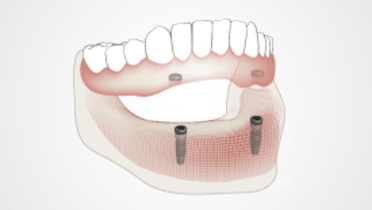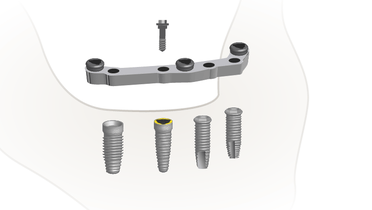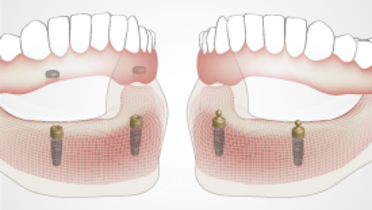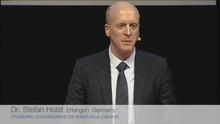-
0
Patient Assessment
- 0.1 Patient demand
- 0.2 Overarching considerations
- 0.3 Local history
- 0.4 Anatomical location
- 0.5 General patient history
-
0.6
Risk assessment & special high risk categories
- 5.1 Risk assessment & special high risk categories
- 5.2 age
- 5.3 Compliance
- 5.4 Smoking
- 5.5 Drug abuse
- 5.6 Recreational drugs and alcohol abuse
- 5.7 Parafunctions
- 5.8 Diabetes
- 5.9 Osteoporosis
- 5.10 Coagulation disorders and anticoagulant therapy
- 5.11 Steroids
- 5.12 Bisphosphonates
- 5.13 BRONJ / ARONJ
- 5.14 Radiotherapy
- 5.15 Risk factors
-
1
Diagnostics
-
1.1
Clinical Assessment
- 0.1 Lip line
- 0.2 Mouth opening
- 0.3 Vertical dimension
- 0.4 Maxillo-mandibular relationship
- 0.5 TMD
- 0.6 Existing prosthesis
- 0.7 Muco-gingival junction
- 0.8 Hyposalivation and Xerostomia
- 1.2 Clinical findings
-
1.3
Clinical diagnostic assessments
- 2.1 Microbiology
- 2.2 Salivary output
-
1.4
Diagnostic imaging
- 3.1 Imaging overview
- 3.2 Intraoral radiographs
- 3.3 Panoramic
- 3.4 CBCT
- 3.5 CT
- 1.5 Diagnostic prosthodontic guides
-
1.1
Clinical Assessment
-
2
Treatment Options
- 2.1 Mucosally-supported
-
2.2
Implant-retained/supported, general
- 1.1 Prosthodontic options overview
- 1.2 Number of implants maxilla and mandible
- 1.3 Time to function
- 1.4 Submerged or non-submerged
- 1.5 Soft tissue management
- 1.6 Hard tissue management, mandible
- 1.7 Hard tissue management, maxilla
- 1.8 Need for grafting
- 1.9 Healed vs fresh extraction socket
- 1.10 Digital treatment planning protocols
- 2.3 Implant prosthetics - removable
-
2.4
Implant prosthetics - fixed
- 2.5 Comprehensive treatment concepts
-
3
Treatment Procedures
-
3.1
Surgical
-
3.2
Removable prosthetics
-
3.3
Fixed prosthetics
-
3.1
Surgical
- 4 Aftercare
Secondary splinting
Key points
- Attachments placed directly on implants as ball attachments or locators provide sufficient retention for overdentures but have a tendency to lose retention over time
- Less mucositis compared to bar retention
- Telescopic crowns seem to cause less technical complications
- All overdenture designs on two implants are functioning as hinging overdentures leading to the frequent necessity of relining
- More maintenance efforts of overdentures than for fixed bridges
Indication and principle considerations
Implant overdentures are an excellent treatment option for edentulous patients and lead to significant improvement of quality of life. There are various options for their retention mechanism:
- connect the implants by bars retaining the overdenture, establishing a primary splinting of implants
- use retentive attachments which are placed directly onto the implant, so the prosthesis itself provides secondary splinting of the implants after seating. The latter retention appliances are ball attachments, locators and telescopic crowns. The mode of attachment of the prosthesis to the implants does not seem to have a definite role in implant failure.

Advantages
The advantage of retentive attachments placed directly onto the implant is that most of the female components can be inserted into preexisting dentures providing a cost-saving treatment. As these attachments have no primary splinting, cleaning is easier and periimplant soft tissue conditions are better than in primary splinting with bars.
Restrictions
Ball attachments need a minimum of 6 mm of vertical space and the retention forces of the female component in some systems (for example Nobel Biocare) can be activated by a screw-driver.
Locators only need 2.9 mm vertical space which is favourable in cases of small interocclusal distance/narrow arches. Retention forces can be varied by using different inserts from ± 400 g up to > 2 kg.
Telescopic crowns consist of a primary coping which is screwed onto the implant and a secondary coping which is attached to the prosthesis and which fits on the primary coping. The prosthesis is retained by friction between the primary and secondary crown. Frequency of technical complications seem to be lower than in using ball attachments or locators. On the other hand the prosthodontic complexity is higher and the use of the existing denture is not possible in most cases.
Disadvantages
There is evidence that the retention forces of ball attachments and locators decrease significantly over time. Some studies report about the necessity of changing the locator insert within one year of use.
The maintenance effort of overdentures is higher than that that of fixed bridges. This includes matrix maintenance like clip activation or replacement of locator inserts. All overdenture designs on two implants are functioning as hinging overdentures leading to the necessitiy of relining in a majority of prostheses.
The patient satisfaction is similar for all overdenture designs although bar-retained overdentures have a higher retention capacity and fewer prosthetic complications. The ease of cleaning for single attachments seems to compensate for the other disadvantages.
The attachment type does not seem to have a role in the success/failure of the implants.






